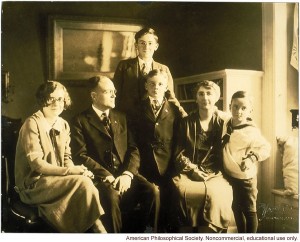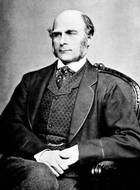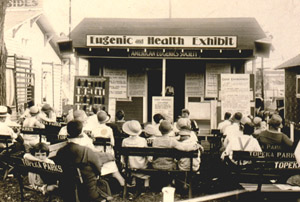Around the turn of the 20th century, the United States was heavily involved in a new science called eugenics, a word coined in 1883 by Charles Darwin’s cousin, Sir Francis Galton. Galton thought the human race could be improved by better breeding practices, which were considered positive eugenics. Preventing the reproduction of undesirables was termed negative eugenics.
In the United States, many people agreed with the idea behind eugenics. Biologist Charles Davenport was director of the Cold Springs Harbor Laboratory in New York, where he founded the Eugenics Record Office. This office kept pedigree records on thousands of families in the U.S. Money for the laboratory came from the Rockefeller Foundation and other philanthropic institutes. Eugenics enthusiasts formed organizations like the American Eugenics Society, the American Breeders Association, and the Race Betterment Foundation.
Americans supported the sterilization of “unfit” people, and in 1907, Indiana became the first state to enact a sterilization law. By 1941, over 60,000 people (mostly women) had been sterilized, some against their will. Eugenics fell out of favor as science began to show that many of the undesirable traits eugenicists studied weren’t inherited at all. Hitler’s eugenics programs horrified Americans when they came to light, and the American eugenics movement fell from favor.

Average Family Winner, Fitter Family Contest in Eastern States Exposition, courtesy American Philosophical Society
________________________________________________________________________

